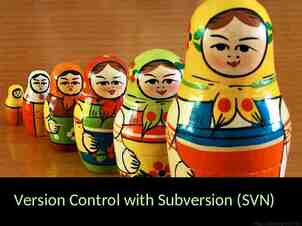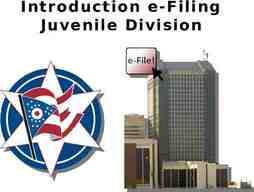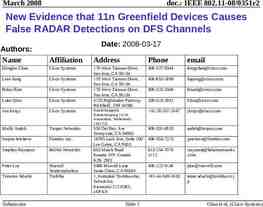Planning and Implementation for Effective Technology
47 Slides235.00 KB

Planning and Implementation for Effective Technology Integration Integrating Educational Technology into Teaching

Preparing for Technology Integration

Why Use Technology? Technology is everywhere. Technology is certainly a part of the landscape of society. Technology has been shown to be effective. However, generally, technology hasn’t always made a difference.

Problems for Educational Technology with Research-based Justifications “In general, the number and quality of studies on educational impact have been disappointing”.(Roblyer, Castine, and King,1988) Few studies make definitive statements about current and projected benefits, and their results have frequently contradicted each other.

Problems for Educational Technology with Research-based Justifications (Cont.) For years, Thompson, Simonson, and Hargrave (1992) questioned the usefulness of past research that focused on the computer as a delivery system.

Problems for Educational Technology with Researchbased Justifications (Cont.) According to Clark (1983, 1985, 1991,1994), the most vocal critic of the research on “computer-based effectiveness,” After empirical and statistical analyses of reviews of research in this area, most such studies suffered from “confounding variables.”

Justifying Technology use: The Case for Motivation Gaining learner attention : There is evidence indicating that teachers frequently use multimedia to conduct essential instruction, capture, and hold students’ attention. Engaging the learner through production work : Students who use technology - based materials feel that they are in control of their own learning.

Justifying Technology Use: The Case for Motivation (cont.) Increasing perceptions of control. “ Many successful users of technologybased materials say that students find strong motivation in the feeling that they are in control of their own learning (Arnone & Grabowski, 1991; Relan, 1992).

Justifying Technology Use: Unique Instructional Capabilities Linking learners to information sources. Helping learners visualize problems and solutions: instructional topics that involve social situations or problem solving. Tracking learner progress: Computers have unique ability to capture, analyze, and present data on students’ performance during learning.

Justifying Technology Use: Unique Instructional Capabilities (cont.) Linking learners to learning tools. Accessing information, developing research and studying skills, and providing multicultural activities without leaving the classroom.

Justifying Technology Use: Support for New Instruction Cooperative learning: Cooperative, small-group work and research projects. Shared intelligence: Intelligence is not only an individual capability, but a product of individuals and tools.

Justifying Technology Use: Support for New Instruction (cont.) Problem solving and higherorder skills: Learning to solve problems and think critically about complex issues.

Justifying Technology Use: Increased Teacher Productivity Helping teachers cope with increasing paperwork. If teachers and organizations spend less time on record keeping and preparing teaching materials, they can spend more time analyzing students’ needs and having direct contact with students (Adams,1985).

Technology’s Role in Restructuring Education: Dilemmas and Direction “ Many educators are convinced that technology is essential to the curriculum reform and school restructuring that is needed to improve the educational system (Bruder, Buchsbaum, Hill and Orlando, 1992; Hill, 1993).” (IETEI p.31)

Changing Teacher Roles Microcomputers placed the power of technology directly in the hands of teachers. The image of technology changed from replacing teachers to supplementing teacher-based instruction.

Enhancing Existing Teaching and Learning Methods Learner-directed instruction Constructivists approaches to teaching and learning Technology resources help teachers deal with the complexities of managing individuals and small groups in the classroom.

Predictions on Technology’s Role in Restructuring Education Teachers will retain a key role. Interdisciplinary approaches will flourish. Research and problem-solving skills will gain more attention. Assessment methods will change to reflect the new curriculum.

A Technology Planning Guide Planning saves time and money. Planning helps achieve goals. Planning builds motivation.

Planning Strategies and Steps Step 1: Create a “ merged vision.” Step 2: Assess the current status. Step 3: Set realistic goals. Step 4: Develop meaningful activities Step 5: Implement the plan. Step 6: Evaluate and revise the plan.

Characteristics of Good Planning Planning should continue at both district and school levels. It should Involve teachers and other personnel at all levels. Yearly amounts should be budgeted for technology purchases. Funding should be incremental.

Characteristics of Good Planning(cont.) Emphasizes teacher training. Applies technology to needs and integrates the curriculum. Keeps users current and builds flexibility. Plans help identify essentials and reduce mistakes.

Common Mistakes to Avoid Avoid linking educational goals to technology planning goals Avoid a preoccupation with tasks that obscure the overall picture of technology uses Avoid making plans that are too general

Sample Technology Plans Plans can be obtained either by ftp at RA.MSSTATE.EDU in the directory/PUB/ARCHIVES/NCTP or by mail for the costs of copying and mailing. (Dyrli and Kinnaman’s article cites sample plans from the NCTP ( National Center for Technology Planning) at Mississippi State University.

Choosing the Right Software for Your Needs Quality. 1. Reviews & recommendations 2. Supportive documentation. Number (and type of copies). Source of best prices. 1. Educational resources. 2. Educational institution. Match curriculum with students’ needs.

Choosing the Right Hardware Ease of use Price Support Intended use

Types of Technology Facilities and Their Uses Benefit/ Limitations/ Common Possibilities Problem Uses Special Permanent Isolate Programming, Purpose setups resources word processLabs ing, etc Labora- Centralized tories resources; Software permanent staff to supervise Programming, word processing, etc

Types of Technology Facilities and Their Uses Benefit/ Possibilities General Accommouse date varied compu- uses by ter labs different groups Limitations/ Problem Only available to one class at a time Library/ media center labs Same as Same as above. above. Moreover, group work may bother other users. Same as above. Moreover, integration of more resources Common Uses Class demonstrations, follow up work

Types of Technology Facilities and Their Uses Benefit/ Possibilities Mobile Stretch Work- resources by stations sharing Mobile PCs On-demand access Limitations/ Problem Increase the chances of breakage, and difficult to move the stations. Portability increases security problems. Common Uses Demonstrations, etc Production tasks; teachers’ assessment tasks

Types of Technology Facilities and Their Uses Benefit/ Possibilities Class- Easily room accessible to Work- teachers and stations students Standalone classroom compu- Limitations/ Problem Only a few students can use at one time, etc. Easily Same as accessible to above. teachers and students Common Uses Tutoring, drill, demonstrations, etc. Tutoring and drills, demonstration, etc.

Designing a Microcomputer Lab Environmental factors. A lab’s layout must provide spatial arrangement Equipment(resource) acquisition. Administration. A lab’s design must address copyright issues.

Protecting Your Investment: Maintenance and Security Issues

Maintenance Needs and Options Maintenance contracts In-house maintenance Built-in maintenance Repair and maintenance budget

Security Requirements Monitoring and alarm systems Security cabinets Lock-down systems

Viruses “Computer viruses are programs written specifically to cause damage or do mischief to other programs or to information (Hansen and Koltes, 1992) A virus can be passed to other programs they contact. A virus can be passed by connecting or inserting a virus disk into a computer.

Viruses (cont.) Viruses eat through data, replicate copies of themselves in memory, and destroy files, print mischievous messages, or cause unusual screen displays. Viruses “tie up” computer resources, frustrate users, and waste valuable time.

Minimize the Impact of Viruses Establish good practices Enforce safety policies Use virus detection programs Educate Users Upgrade virus programs

Other On-going Implementation Issues Equity Issues Economic inequity Ethnic inequity Multicultural issues Recommendations to address equity issues Recommendations to address multicultural issues Copyright infringements

Multicultural issues Technology’s built-in bias. “ .the reverence with which technology is held in the U.S. may be in direct contradiction to the perceptions of cultures that are heavily relationship oriented” (Roblyer, Dozier-Henry, and Burnette, 1996, in press).

The Gender Gap Girls tend to use computers, often by choice, less than boys (Bohlin,1993; Sanders, 1993). “ Gender bias may spring up in software that features competitive activities preferred more by males than females.” (IETIE, p44)

Equity for Special Populations A more subtle kind of technology inequity has been observed with handicapped, lower-ability, and learning-disabled students ( Fredman, 1991; Engler,1992; Dozier-Henry,1995). Frequently, these students’ uses of computers have been limited to lowlevel remediation, and drill and practice applications.

Equity for Special Populations Inequities are also found in the accessibility of technology, funding levels, and investments in additional hardware, software, and devices.

Recommendations to Address Equity Issues: Accountability measures Incentives and priority funding Innovative programs Enrichment programs Recognition Business and community partnerships Staff development Student recruitment

Recommendations to Address Multicultural Issues Teachers must be sensitive to cultural differences among their students, some of whom may be very opposed to using machines. Teachers must carefully consider changing cultural views in order to accomplish the goals of technology and meet the needs of students.

Copyright Infringements Illegally copying disks is called software piracy; it violates the provisions of the U.S.Copyright Act of 1980, and has serious legal repercussions.

Software Publishers Association (SPA) Copying Guidelines For most software programs, you can read about user benefits in the registration brochure and formulate ideas on the applicability of the package before making a purchase. You are never allowed to copy software for any reason without permission from the software company. (1 legal backup copy)

Software Publishers Association (SPA) Copying Guidelines (cont.) There must be one authorized copy of a software product for every computer in a company. (licenses) Bulletin boards are bound by copyright except when shareware or public domain software is offered. The same copyright regulations apply to individuals, corporations, schools, and professional training centers.

The End .






